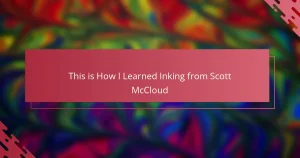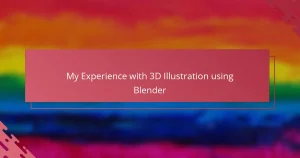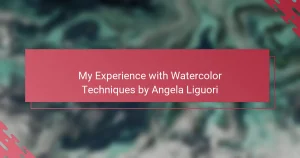Key takeaways
- Curate your portfolio to reflect your unique style and creative journey, prioritizing pieces that resonate emotionally and cohesively.
- Experiment with mixed media techniques to discover new ways to express ideas, allowing textures and materials to inform your artwork.
- Showcase your artistic voice by including personal narratives and embracing imperfections, which can reveal more about your identity as an artist.
- Present your work with clarity and intention, tailoring the presentation to your audience and enhancing it with storytelling elements.
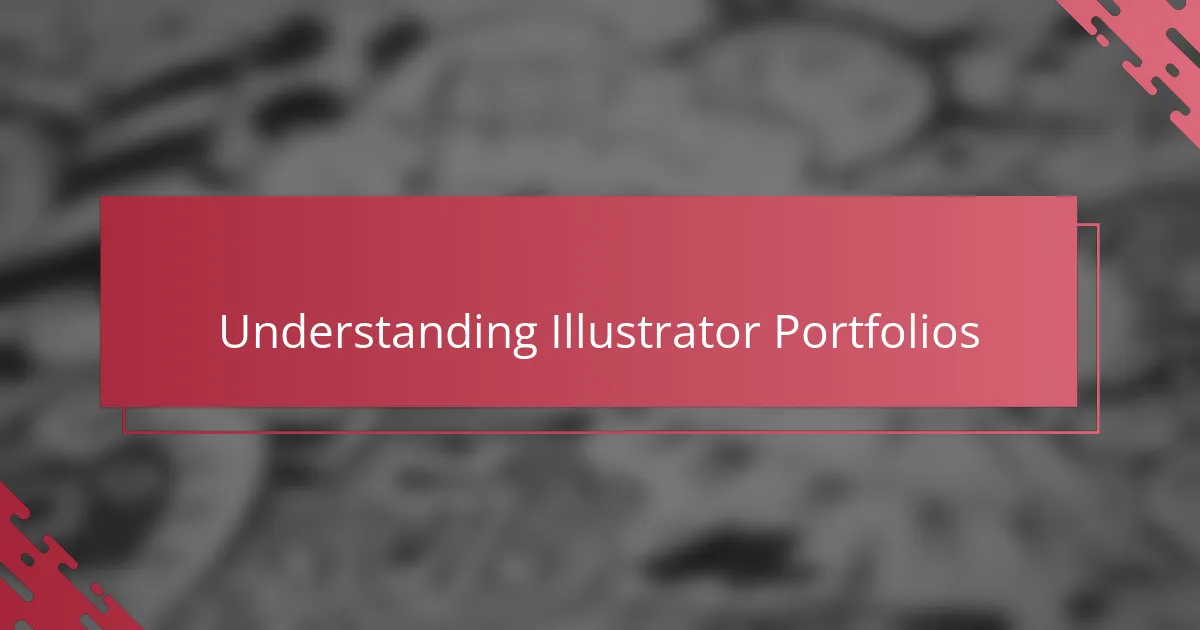
Understanding Illustrator Portfolios
An illustrator portfolio is more than just a collection of artwork; it’s a visual narrative of your creative journey. When I first started assembling mine, I realized it wasn’t about showing everything I had ever drawn. Instead, it was about selecting pieces that truly represented my style and passion.
Have you ever wondered what makes a portfolio stand out? For me, it was the ability to tell a story through each image, showing not just technical skill but also the emotions and ideas behind the work. That’s when my portfolio started to feel like an extension of my voice, rather than just a showcase of talent.
Building my portfolio made me appreciate how important it is to strike a balance between variety and coherence. Too many styles can confuse viewers, but too little might not fully capture your range. Finding that sweet spot was a turning point in how I understood illustrator portfolios—and how I found my own creative identity.
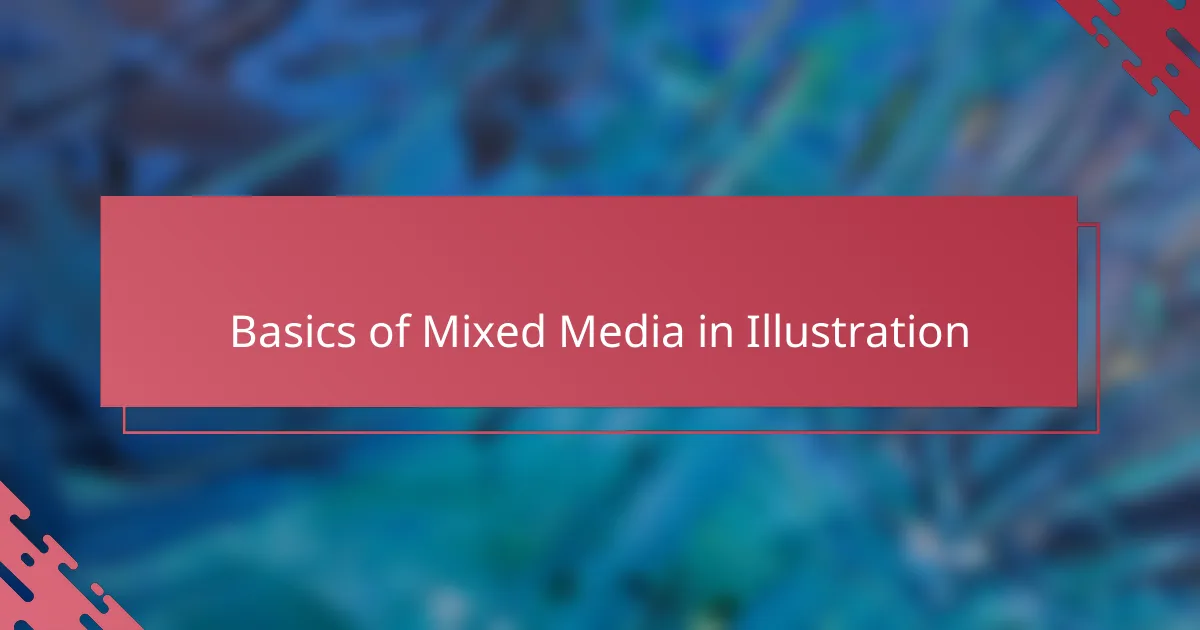
Basics of Mixed Media in Illustration
Mixed media in illustration is all about combining different materials and techniques to create something unique. When I first experimented with layering watercolors over ink sketches, I was amazed at how the textures and colors interacted. It felt like discovering a new language to express ideas that I couldn’t convey with just one medium.
Have you noticed how mixing digital elements with traditional art can bring illustrations to life? For me, the thrill was in blending tactile materials like paper and fabric with digital tools. This fusion not only enhanced the visual appeal but also added a personal touch that made my work stand out.
Starting with basics like experimenting with collage or ink washes helped me understand how each material behaves and complements another. That hands-on trial and error became a powerful lesson—I learned to listen to each medium’s voice, and together, they amplified my own creative expression.
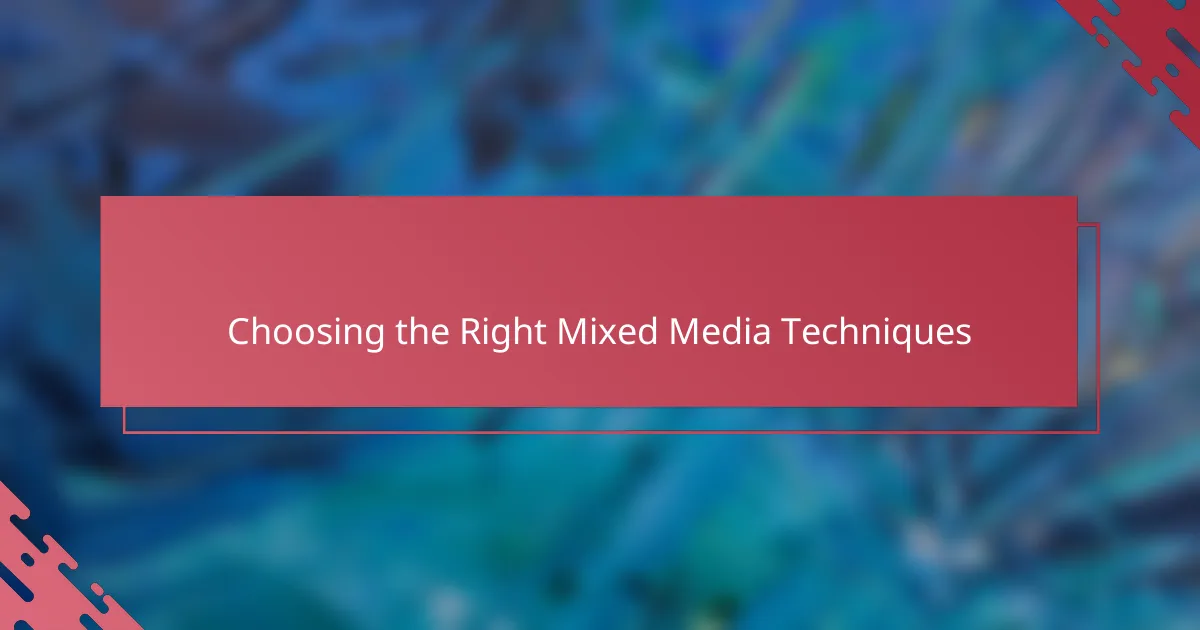
Choosing the Right Mixed Media Techniques
Finding the right mixed media techniques often felt like tuning an instrument to find the perfect pitch. I remember trying acrylics on textured paper but feeling it overwhelmed the delicate Ink lines I cherished. That moment taught me how crucial it is to choose methods that harmonize, not compete, with each other.
Have you ever struggled to decide whether to use bold brushstrokes or subtle washes? For me, it was about understanding the mood I wanted to convey—sometimes soft pastels whispered the story better, while other times, sharp charcoal added the punch my message needed. This trial and error made the creative process more intuitive and deeply personal.
Eventually, I realized that selecting techniques isn’t just about materials; it’s about listening to what your artwork wants to become. When I combined fabric scraps with digital painting, it wasn’t just layering textures but weaving together emotions that resonated with my voice the most. Choosing the right mix made my illustrations feel authentic and alive.
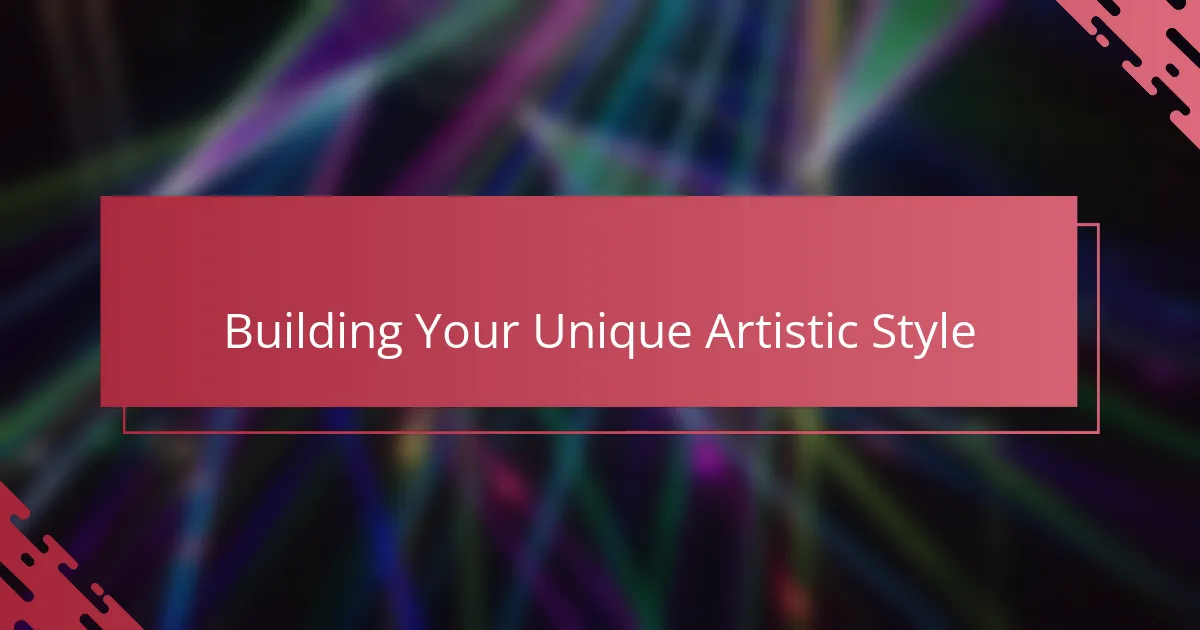
Building Your Unique Artistic Style
Discovering your unique artistic style feels like uncovering a part of yourself you didn’t fully know existed. When I finally stopped trying to mimic others and leaned into what moved me—the colors, shapes, and mediums that sparked genuine excitement—that’s when my style began to emerge naturally. Have you ever noticed how certain textures or color palettes just resonate deeper inside? Embracing those personal preferences can guide you toward an authentic style that feels right.
At times, I struggled with uncertainty, wondering if my style was distinct enough to make an impact. But I learned that uniqueness isn’t about being wildly different; it’s about consistency and intention. By repeatedly exploring themes and techniques that mattered most to me, I built a cohesive body of work that felt both honest and recognizable. Isn’t it fascinating how your style evolves when you stop forcing it and simply let your creative instincts lead?
The process of building a unique style is a journey, filled with trial, error, and discovery. For example, mixing unfinished sketches with bold color experiments helped me balance spontaneity with purpose. This ongoing dialogue between experimentation and reflection keeps my work fresh while grounding it in my personal voice. How might embracing imperfection and playfulness revolutionize your approach to developing an artistic identity?
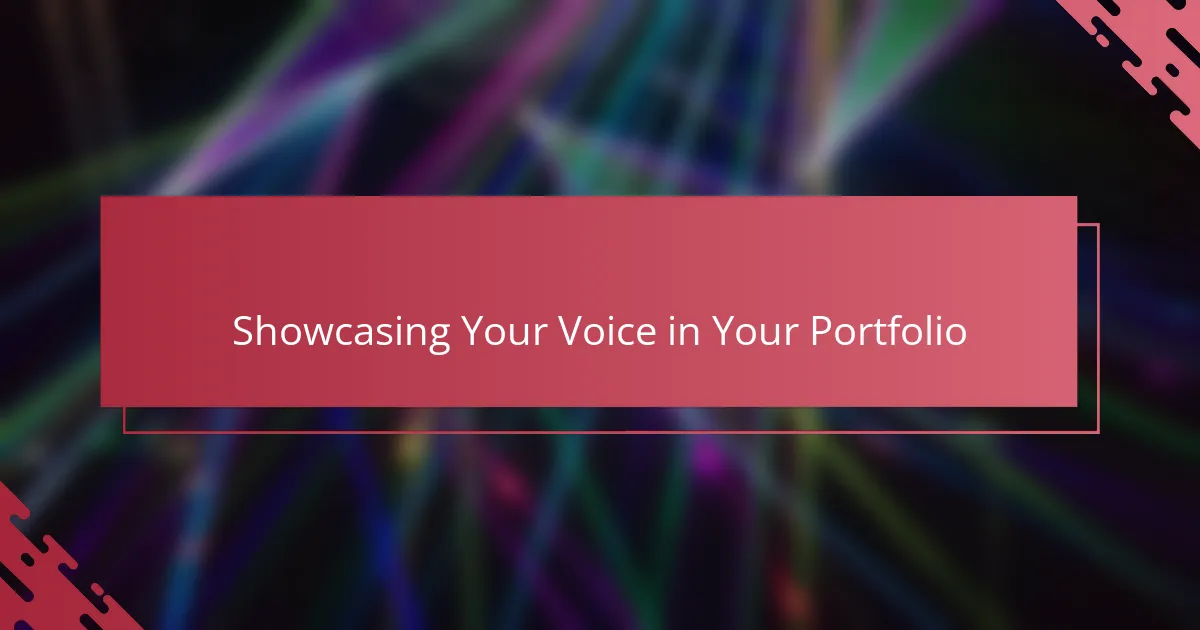
Showcasing Your Voice in Your Portfolio
Showing my voice in a portfolio means more than just displaying finished pieces—it’s about curating work that speaks to who I am as an artist. I remember hesitating to include some pieces that felt imperfect, but those imperfections ended up revealing the nuances of my style and creative journey. Have you ever thought about what your “imperfections” say about your artistic identity?
I found that writing brief captions or notes alongside my illustrations added another layer of personality, giving viewers a glimpse into my thought process and inspirations. It’s like inviting someone into my studio, sharing not just the art but the story behind it. Could adding this narrative touch make your portfolio feel more like a conversation than a gallery?
Choosing which works to showcase can be tricky, but I realized it helps to think about the emotional thread connecting them. When my portfolio flowed with consistent themes or moods, it felt authentic and true to my voice. How might your portfolio change if you focused less on impressing and more on expressing?
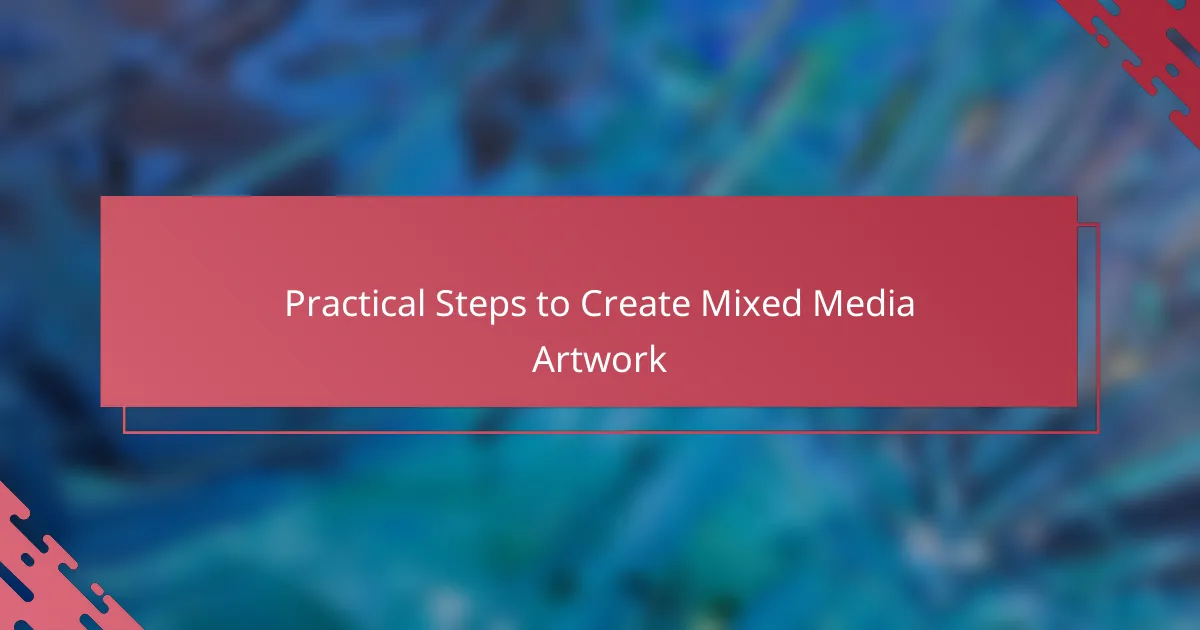
Practical Steps to Create Mixed Media Artwork
One practical step I often take is starting with a clear concept or emotion I want to express. For instance, when I layered acrylic paint over torn paper collage, it wasn’t random—it was a dialogue between textures that helped convey tension in the piece. Have you ever noticed how starting with intention makes combining materials feel less chaotic and more purposeful?
Experimentation plays a huge role in my process. I like to test how different media interact—sometimes ink bleeds unexpectedly on watercolor, creating beautiful surprises. That unpredictability has taught me to embrace mistakes as creative opportunities rather than setbacks. What if you allowed room for serendipity in your work instead of trying to control every detail?
Finally, I always keep the practical side in mind: preparing surfaces properly, using adhesives thoughtfully, and layering materials in a way that ensures durability. I learned early on that a stunning mixed media piece can lose its impact if layers peel or colors fade too quickly. How do you balance creative freedom with technical care in your artwork?

Tips for Presenting Your Work Effectively
Presenting your work effectively starts with simplicity. When I first organized my portfolio, I realized clutter only distracted from the essence of my illustrations. Have you ever noticed how a clean, focused layout lets your art breathe and speaks louder than an overcrowded page?
Another tip I swear by is tailoring the presentation to your audience. For instance, showing detailed process shots to fellow illustrators sparked richer conversations, while clients appreciated concise, polished pieces with clear context. How might adjusting your narrative change the way others connect with your work?
Lastly, don’t underestimate the power of storytelling. I found that pairing images with brief, personal captions transformed my portfolio from a static gallery into a meaningful experience. Could sharing the ‘why’ behind your art invite viewers to hear your unique voice more clearly?
